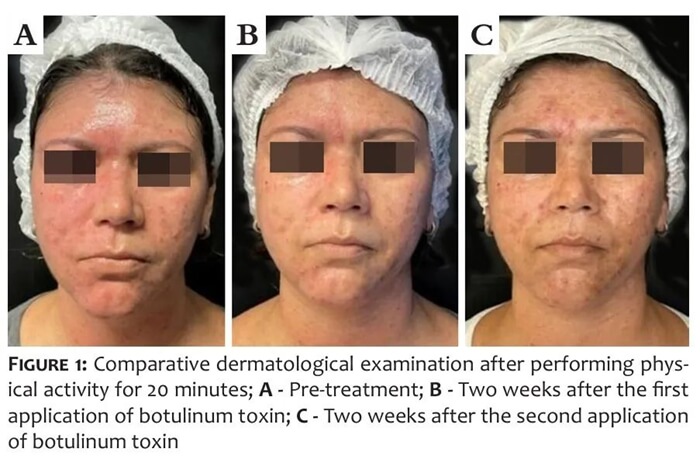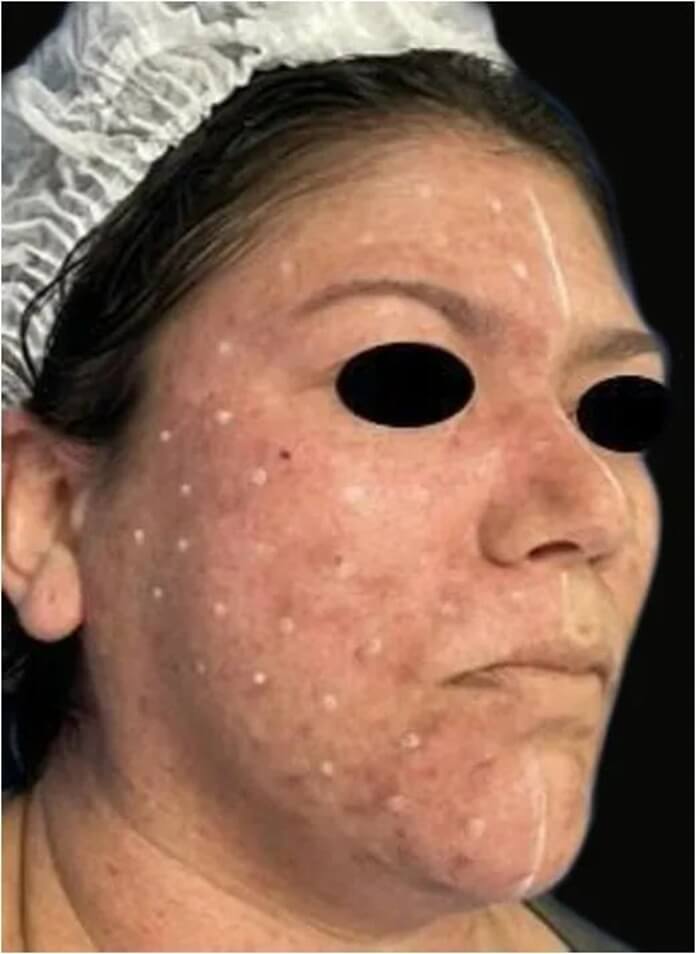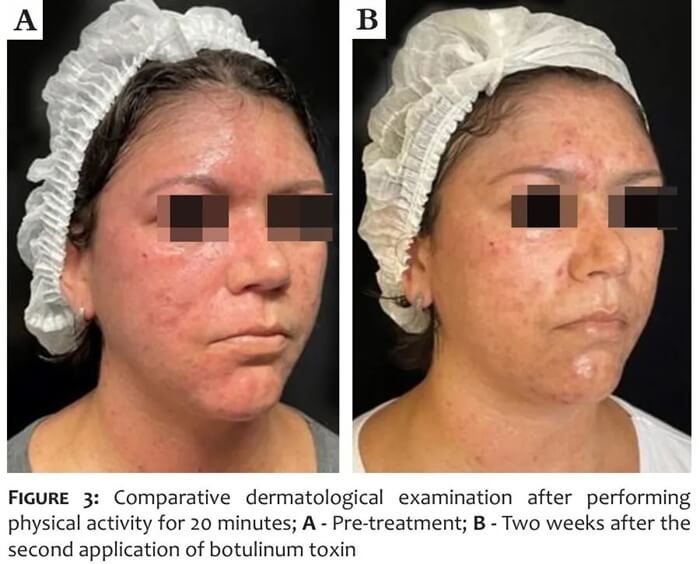Idiopathic Harlequin Syndrome: Exploring Botulinum Toxin Treatment
Note: This article includes clinical photographs illustrating the symptoms and treatment process of Harlequin syndrome. While they are provided for educational purposes, some images may be visually sensitive. Reader discretion is advised.
Harlequin syndrome is a rare autonomic nervous system disorder characterized by unilateral impairment of sweating and vasomotor control due to damage to sympathetic nerve fibers. This condition produces a striking presentation: when the patient exercises, experiences emotional excitement, or is exposed to heat, the affected side of the face shows an absence of sweating, while the contralateral side exhibits compensatory flushing and hyperhidrosis. In some cases, the neck and chest are also involved.
While most cases are idiopathic, Harlequin syndrome can be congenital or secondary to structural lesions or postoperative iatrogenic injury. Harlequin syndrome treatment is directed at the underlying cause when identifiable. This article presents a case of idiopathic Harlequin syndrome successfully managed with botulinum toxin treatment.
Case Report: Botulinum Toxin for Idiopathic Harlequin Syndrome
A 35-year-old woman presented with a two-year history of erythema and sweating affecting the right side of her face, triggered by exertion and heat.
During dermatological evaluation, after 20 minutes of physical exercise, she developed sharply demarcated erythema and profuse sweating over the right hemiface, neck, and upper chest. There were no changes in pupil size or eyelid position (Figures 1A, 3A).

Figures 1
Imaging ruled out compressive etiologies. MRI of the skull, neck, and cervical spine, as well as chest CT, revealed no abnormalities. Neurological and ophthalmological assessments were unremarkable. A diagnosis of idiopathic Harlequin syndrome was confirmed.
First Stage of Botulinum Toxin Treatment
The patient underwent intradermal botulinum toxin treatment, administered in two stages.
In the first session, injection sites were marked across the entire right hemiface, spaced approximately 1.5 cm apart (Figure 2).
A total of 9 units of botulinum toxin were reconstituted in 27 volume units of 0.9% saline, yielding 36 total volume units. Each site received 0.25 units.

Figures 2
Two weeks later (Figure 1B), follow-up after 20 minutes of exercise revealed significant improvement in right-sided erythema and sweating. Residual erythema areas were identified and marked.

Figures 3
Second Stage of Botulinum Toxin Treatment
In the second session, 4 units of botulinum toxin were reconstituted in 12 volume units of 0.9% saline, for a total of 16 volume units. Targeted injections were administered to residual symptomatic areas.
Two weeks later (Figures 1C, 3B), the patient showed marked reduction of erythema and sweating on the right side. Post-treatment evaluation revealed no facial asymmetry (Figure 4).

Figures 4
Discussion: Current Approaches to Harlequin Syndrome Treatment
Most Harlequin syndrome cases are idiopathic, but congenital or secondary causes should be considered. Therefore, imaging studies are essential for identifying the etiology.
When a structural lesion is found, treatment should be directed accordingly. In idiopathic cases, the goal is symptom control.
Other Reported Treatment Options
Ipsilateral sympathectomy – A surgical approach that has been described but may fail in refractory cases.
Stellate ganglion block – Reported as a potential intervention.
Oral medications – Agents such as oxybutynin and propranolol may be used, but they offer low site-specificity and carry a higher risk of systemic adverse effects.
Advantages of Botulinum Toxin Treatment
In recent literature, botulinum toxin treatment has been reported to produce favorable results in Harlequin syndrome. By blocking acetylcholine release, botulinum toxin induces temporary chemical denervation, reducing or abolishing the activity of target organs. This in turn interrupts the autonomic vasodilation pathway.
In this case, botulinum toxin was chosen as a minimally invasive, temporary, and targeted therapeutic option, leading to promising outcomes without compromising facial symmetry.


